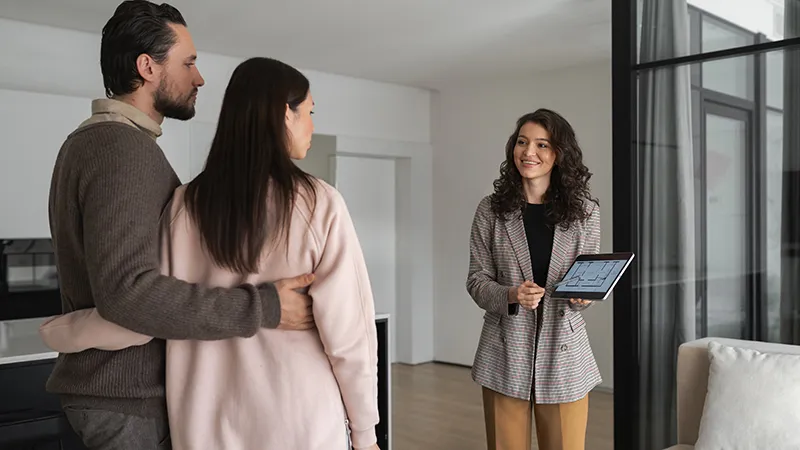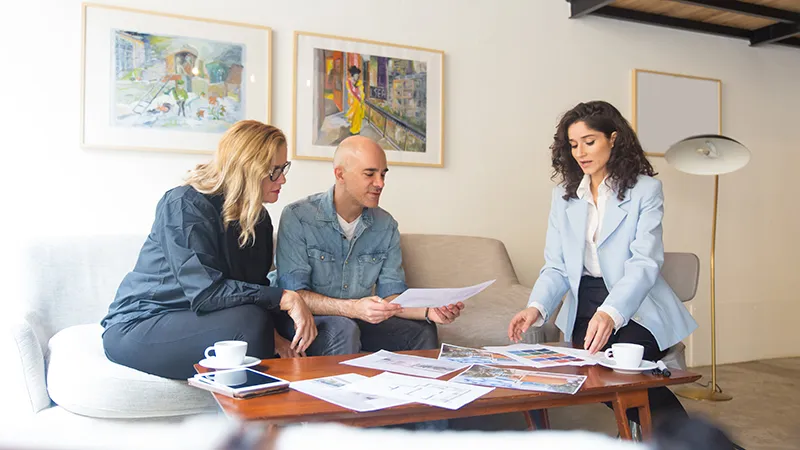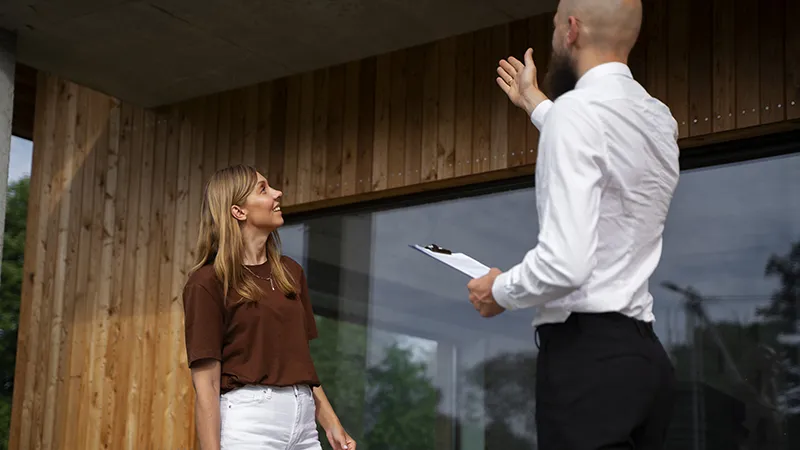A property viewing tour represents a pivotal stage in the journey of acquiring a home. It extends far beyond a mere walk-through; it is an invaluable opportunity to transcend online imagery and truly immerse oneself in a potential living space, assessing its ambiance, functionality, and overall suitability for one's lifestyle. A meticulously planned and executed viewing can significantly conserve time, avert future regrets, and even bolster one's position as a prospective buyer. This comprehensive guide, informed by expert recommendations, aims to equip individuals with the necessary strategies and understandings to ensure every viewing contributes meaningfully to their home search.
Before the Tour: Strategic Preparations for an Effective Viewing

Before any individual steps foot into a prospective new home, a degree of preparation can profoundly influence the productivity and perceptiveness of the viewing. This preparation is not merely about organization; it is about establishing a foundation for success, particularly within a competitive market.
Thorough Pre-Viewing Research
A crucial initial step involves a detailed examination of the home listing, either independently or in collaboration with a real estate agent. This process extends beyond a cursory glance at photographs; it necessitates a deep dive into the specifics, actively seeking out potential issues with the property and formulating precise questions for clarification during the viewing. This proactive approach ensures that individuals arrive at the property with a clear understanding of what to anticipate and which specific areas warrant closer scrutiny.
This initial research serves as a strategic pre-screening mechanism, enhancing both efficiency and focus during the actual tour. By systematically reviewing listings beforehand, individuals can effectively eliminate properties that clearly do not align with their established criteria, thereby preventing the expenditure of valuable time on unsuitable options. This targeted approach allows the limited viewing time to be concentrated on properties that genuinely hold promise. Furthermore, arriving at a property having already identified potential concerns and prepared specific inquiries conveys a sense of knowledge and seriousness to the seller and their agent. This not only facilitates the gathering of critical information but also subtly strengthens the homebuyer's standing, signaling a discerning approach that can positively influence subsequent negotiations. This transforms the viewing from a passive observation into a purposeful investigation.
Assembling the Team and Essential Documents
For those seriously considering a home purchase, it is highly advisable to ensure that all key decision-makers are present for the viewing. This collective attendance significantly enhances efficiency, as it precludes the necessity of scheduling subsequent showings solely to accommodate individuals who could not attend the initial visit. It is also prudent to minimize distractions, such as leaving pets or children at home, to allow for undivided attention to the intricate details of the property under consideration.
Equally vital is the organization of all pertinent documents prior to the viewing. This includes, if feasible, bringing a copy of the home listing and, most importantly, a mortgage pre-approval letter. In the Turkish market, this level of preparedness often includes completing preliminary paperwork like getting a Tax ID and opening a Turkish bank account, which signals to sellers that you are a serious buyer. A clear understanding of one's financial capacity before entering a potential property is paramount, as a lack of this clarity could lead to significant setbacks if a lender is unwilling to extend sufficient funds for a particular purchase.
The emphasis on bringing together all key individuals and having financial documentation in order highlights the profound value of preparedness in a competitive market. Possessing a mortgage pre-approval letter and a well-defined budget communicates to both the seller and their agent that the individual is a serious and qualified buyer. In a dynamic seller's market, this can be a decisive factor, as sellers often prioritize buyers who demonstrate a clear path to closing the transaction. Consequently, being fully prepared with one's team and documents can provide a crucial competitive advantage over less prepared buyers. It enables swift action if the ideal home is discovered, potentially allowing for an offer submission ahead of others, and conveys a sense of reliability that can be more appealing to a seller than a slightly higher but less certain offer. This transforms preparation from a mere checklist item into a strategic tool for gaining a competitive edge.
Pre-Viewing Checklist
- Review home listing thoroughly: Examine details, photos, and floor plans to understand the property's features and potential issues.
- Identify specific questions: Jot down inquiries about the property's history, systems, or any unclear aspects from the listing.
- Confirm all decision-makers can attend: Ensure everyone involved in the purchase decision is present to avoid the need for multiple viewings.
- Arrange for childcare/pet care if needed: Minimize distractions during the tour to allow full focus on the property.
- Bring mortgage pre-approval letter: Demonstrates financial readiness and seriousness as a buyer.
- Bring copy of home listing: A physical or digital copy for quick reference during the tour.
- Know your maximum affordable price: Have a clear understanding of your budget to avoid considering properties beyond your financial reach.
- Bring notebook/pen or notes app: Essential for recording observations, questions, and initial reactions.
- Bring camera/smartphone: For taking pictures of rooms, features, and potential issues (with permission).
- Bring tape measure: To verify room dimensions or measure for furniture placement.
- Wear comfortable, easy-to-remove shoes: Shows respect for the home, especially if shoe removal is customary.
During the Tour: Maximizing the On-Site Inspection

The time spent inside a potential property is invaluable. This section outlines how to optimize every moment, striking a balance between thorough inspection and respectful conduct.
Strategic Viewing: Allowing Time and Varying Visit Times
It is advisable to resist the inclination to schedule too many home tours within a single afternoon. Adequate time should be allocated for each property, including factoring in travel time between locations, to avoid feeling rushed, especially when a particularly appealing property is encountered. For homes that genuinely resonate, scheduling a second viewing at a different time of day is highly recommended. This allows for the discovery of new information regarding the surrounding neighborhood and the property's environmental factors. For instance, one can gain a sense of weekday morning traffic patterns and their implications for commuting, observe neighborhood activity such as children playing or residents walking dogs after work, and discern any road noise or other sounds that may not have been present during the initial visit.
The practice of allowing ample time and varying visit times facilitates a more holistic evaluation that extends beyond the physical confines of the house. The recommendation to visit at different times explicitly directs attention to external factors like traffic, neighborhood activity, and ambient noise. This highlights that a home's intrinsic value and daily livability are deeply intertwined with its surrounding environment and how that environment evolves throughout the day. A property that appears tranquil on a quiet Sunday afternoon might, for example, be situated on a busy commuter route during weekday rush hours. This temporal dimension of evaluation is not merely about identifying potential problems; it is fundamentally about assessing the home's compatibility with one's lifestyle. Understanding the true rhythm of the neighborhood and its impact on commuting, personal peace, and family life is crucial for long-term satisfaction in a new residence.
Observing and Documenting: Notes, Pictures, Measurements, and Layouts
One's memory can prove unreliable when viewing multiple properties. Therefore, it is essential to bring tools for capturing details: a notebook or a digital notes application for recording reactions and questions, a camera for visual records, and a tape measure for verifying dimensions. Some individuals find it beneficial to sketch a simple floor plan before departing, as this can be particularly helpful when later comparing various properties.
The systematic documentation of each property serves as a powerful method for mitigating cognitive biases in decision-making. The understanding that "one won't remember everything" and that documentation is "helpful when comparing properties later" underscores the limitations of human memory. The human brain is susceptible to biases, especially when processing a large volume of information, such as the recency bias where the most recently viewed property might seem superior. Detailed notes, photographs, and measurements act as an external memory, providing objective data points that counteract these biases. This enables a more rational, side-by-side comparison of features, potential flaws, and overall impressions. By systematically documenting each property, individuals can make decisions based on concrete facts rather than fleeting impressions or emotional responses. This leads to a more informed investment choice, reducing the likelihood of buyer's remorse and ensuring the home truly aligns with long-term needs.
Looking Beyond the Surface: Curb Appeal and Simple Fixes

It is important not to allow initial cosmetic impressions to solely dictate a purchasing decision. Individuals should endeavor to look past superficial flaws, such as outdated decor or minor landscaping issues, to assess the home's fundamental structure, location, and inherent potential. Simple cosmetic alterations are considerably easier to address than more profound, structural problems. For instance, while bad carpet, unattractive wallpaper, or outdated appliances and furniture may not be inexpensive to replace, they are far more manageable to change than a home's location or lot size. One should not dismiss a home with an excellent location or other attractive features based solely on a first impression, particularly if its curb appeal could be enhanced without significant financial outlay.
This approach to viewing properties fosters strategic value recognition and an understanding of investment potential. The advice to "look past this initial 'gut' reaction" and "don't sweat simple fixes" directly challenges the tendency to be swayed by immediate aesthetics. This encourages a prospective buyer to perceive the property's potential beyond its current state. By identifying cosmetic issues that are relatively inexpensive to rectify, an individual may acquire a home at a more favorable price point compared to a perfectly staged one, subsequently adding substantial value through targeted improvements. This represents a strategic approach to homebuying, where the property is viewed as an investment opportunity rather than merely a ready-to-move-in dwelling. Dismissing a home based on easily alterable features could mean overlooking a property with superior "location or lot size" —factors that are impossible to change. This perspective guides buyers to prioritize immutable, high-value attributes over superficial, mutable ones, thereby optimizing their long-term investment and avoiding significant opportunity costs.
Respectful Engagement: Essential House Viewing Etiquette
While a thorough inspection is paramount, it must be balanced with a deep respect for the seller's property. Adhering to fundamental etiquette guidelines is crucial for creating a positive impression and fostering a constructive relationship with both the seller and their agent. This includes arriving on time, which sets a positive tone with the listing broker or seller. Simple gestures such as removing shoes when appropriate, refraining from using the bathroom, avoiding opening nightstands, hampers, or dressers, and refraining from eating or drinking during the viewing signal respect for the home. If there is a desire to inspect the interior of a closed space, such as a closet or private home office, it is appropriate to politely ask the real estate agent for permission before proceeding.
It is also important to manage one's emotions during the tour. If the seller is present or nearby, it is advisable to avoid overtly expressing strong admiration or criticism of the home's features. Discussions about what was liked or disliked should be reserved for a private conversation with the agent after leaving the property. The viewing is not the appropriate time to engage in negotiations or to enumerate every flaw in the house. Openly pointing out numerous imperfections could lead the seller to conclude that the buyer may not successfully navigate the subsequent inspection process.
The conduct during a home viewing extends beyond mere courtesy; it represents a crucial pre-negotiation phase and an opportunity for relationship building. The guidance on etiquette, emotional management, and avoiding premature negotiation is not simply about being polite; it is about strategic impression management. The advice explicitly states the importance of making a "good impression" and presenting oneself "in a very positive light". An individual's behavior during the viewing is observed and forms the seller's initial perception of them as a reliable and reasonable buyer. The most profound understanding here is the direct link between respectful conduct and one's "negotiating position" , as well as the seller's willingness to proceed with the transaction. In a competitive market, a seller might favor a slightly lower offer from a buyer perceived as respectful and cooperative over a higher offer from someone who was rude or excessively critical during the viewing. The viewing, in essence, is the initial stage of negotiation, where a positive relationship is cultivated that can smooth the path to closing.
Asking the Right Questions: Inquiries About Systems, Utilities, and Property Lines

Individuals should not hesitate to politely ask their real estate agent or the seller about the property's history, its various systems, and any potential issues. These questions provide vital context that extends beyond what is immediately visible. If the seller or agent does not have an immediate answer, it is appropriate to ask the real estate agent to follow up with the seller's agent for the information later.
Key areas for inquiry include:
- Any issues the seller is legally obligated to disclose.
- Details of recent home improvements or repairs.
- The last time heating, cooling, plumbing, and electrical systems were updated.
- Average monthly utility costs.
- The existence of any easements or property line disputes.
- Any liens, judgments, or other title concerns.
- The age of the roof.
- The ability to test water pressure.
- The age of appliances.
- Parking arrangements (if relevant).
- When the water heater was last replaced.
- Ownership of fences.
This proactive approach to questioning facilitates proactive risk mitigation and future cost forecasting. The extensive list of specific questions to ask is designed to uncover potential hidden liabilities or significant future expenses that are not apparent during a cursory walk-through. For example, knowing the age of the roof or the HVAC system allows for the anticipation of major replacement costs. Inquiring about easements or liens reveals potential legal encumbrances that could affect property use or ownership. By proactively gathering this information, individuals can construct a more accurate financial picture of homeownership, extending beyond the mere purchase price to include anticipated maintenance and operational costs. This knowledge also provides significant leverage during negotiations, enabling buyers to factor in the cost of necessary repairs or address legal issues before making a final offer. This transforms questions into a powerful tool for due diligence and financial foresight.
Key Questions to Ask During a Home Tour
Property History & Disclosures
- Are there any issues the seller needs to disclose?
- Have there been any recent home improvements or repairs?
System Condition & Age
- When were the heating, cooling, plumbing, and electrical systems last updated?
- How old is the roof?
- How old are the appliances?
- When was the water heater last replaced?
- Can water pressure be tested?
Operating Costs
- What is the average monthly cost of the utility bills?
Legal & Boundary Issues
- Are there any easements or property line issues?
- Are there any liens, judgments, or other title concerns?
- Does the fence belong to the property or neighbors?
Practicalities
- Where can one park? (If relevant)
After the Viewing: Reflection and Next Steps

The viewing process does not conclude upon leaving the property. The period of post-viewing reflection is critical for objective evaluation and strategic planning.
Managing Emotions: Private Discussion of Impressions
While it is entirely natural to experience excitement or disappointment during a home tour, it is essential to reserve detailed reactions for a private discussion with one's real estate agent or team. Public displays of strong emotion, whether positive or negative, can inadvertently weaken one's negotiating position. If there is a possibility the seller might overhear, it is advisable to avoid overtly "oohing and ahhing" over desirable features or, conversely, criticizing perceived flaws. Instead, wait until safely back in the car with the agent to discuss what was liked and disliked. The objective is to avoid compromising a future negotiating stance or inadvertently offending the seller of a potentially ideal home.
This disciplined approach to emotional expression during the tour is a strategic form of emotional management for negotiation advantage. It is not merely about politeness; it is fundamentally about information control. By keeping reactions private, individuals prevent the seller from accurately gauging their level of interest or disinterest. If a seller perceives a deep emotional attachment to their home, they may feel less compelled to negotiate on price or terms. Conversely, if they overhear a buyer meticulously dissecting every flaw, they might become defensive or less amenable to future discussions. This disciplined approach ensures that when an offer is eventually made, it stems from a place of strategic assessment rather than emotional impulse, thereby optimizing the chances of securing the best possible terms without prematurely revealing one's hand.
Considering a Second Look: When and Why to Revisit
If a property genuinely resonates and stands out among others, a second viewing is often invaluable. It is highly recommended to schedule this revisit for a different time of day than the first. This allows for the observation of new aspects, such as peak commute traffic, varying neighborhood activity, or changes in natural light throughout the day. For instance, one can gain a clearer understanding of what traffic might mean for a daily commute, whether neighbors are typically active with children or pets after work, or if previously unnoticed road noise or other sounds become apparent.
The decision to conduct a second viewing, particularly at a different time, is a critical step in de-risking the investment through temporal observation. A single viewing provides only a snapshot of the property. A second viewing offers a more dynamic, comprehensive understanding of both the home and its immediate environment. This is not merely about seeing more; it is about uncovering environmental factors that are inherently time-dependent and significantly impact daily living. A street that appears quiet in the afternoon might transform into a congested thoroughfare during rush hour, or a serene backyard could become lively with neighborhood children after school. These are crucial aspects of quality of life that a single, brief viewing cannot reveal. By observing the property at varying times, individuals can more accurately assess its long-term compatibility with their lifestyle and identify potential stressors or nuisances before making a commitment. This proactive temporal observation serves as a vital risk mitigation strategy, helping to prevent buyer's remorse stemming from unforeseen environmental issues and fostering a more harmonious living experience.
Conclusion: Empowering the Homebuying Journey
A well-planned, respectful, and thorough property viewing is an indispensable tool in the homebuying process. It transcends a simple visit, evolving into a strategic inspection that can uncover crucial details, inform financial decisions, and even influence negotiation outcomes. By diligently conducting pre-tour research, assembling necessary documents and a supportive team, and approaching each viewing with a blend of meticulous observation and thoughtful etiquette, individuals can transform what might otherwise be a daunting task into an empowering experience. The systematic documentation of observations, the ability to look beyond superficial flaws, and the strategic management of interactions all contribute to a more informed and confident decision-making process. Ultimately, by embracing these comprehensive strategies, prospective homebuyers can navigate property viewings with clarity and a strategic mindset, moving closer to confidently finding the ideal place to call home.

 USD
USD
 TRY
TRY
 EUR
EUR
 IRR
IRR
 RUB
RUB

Comments